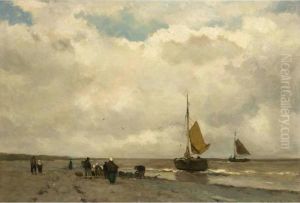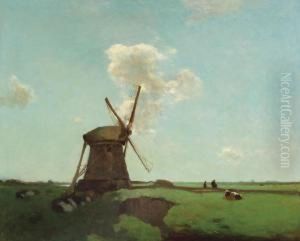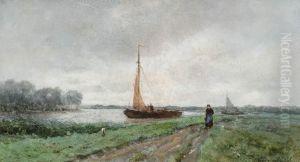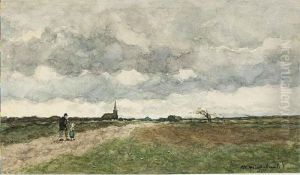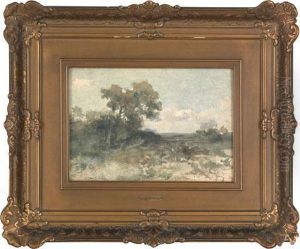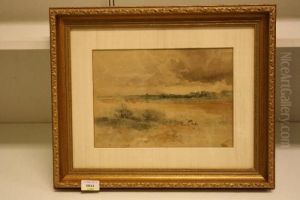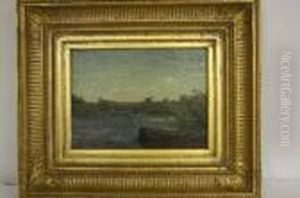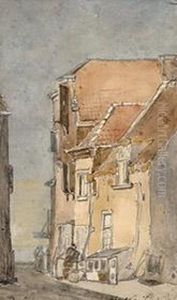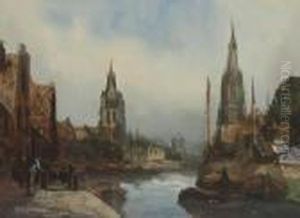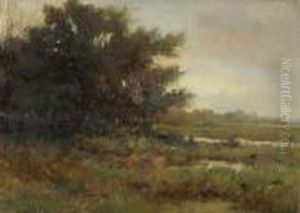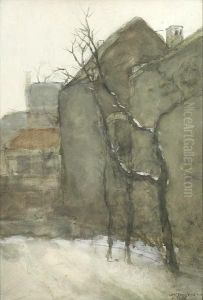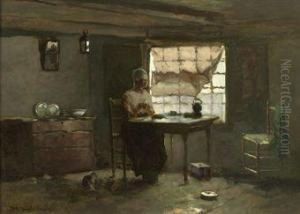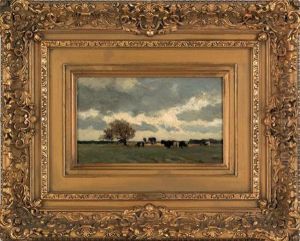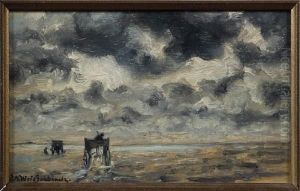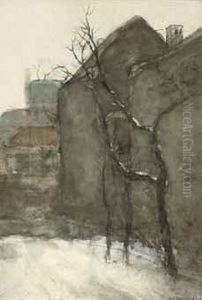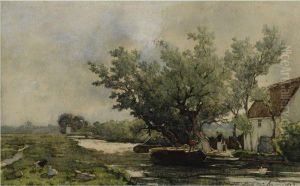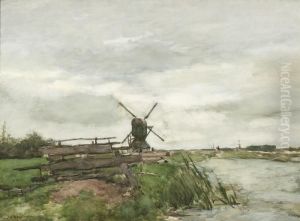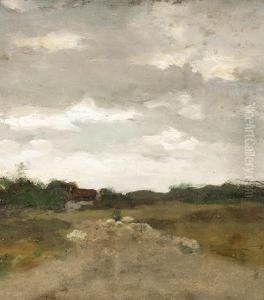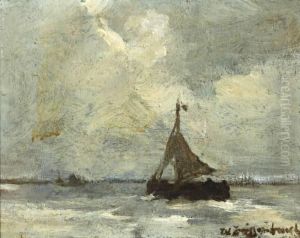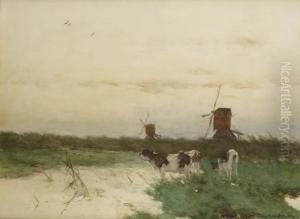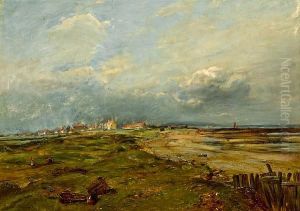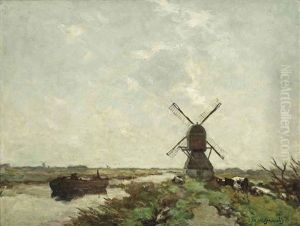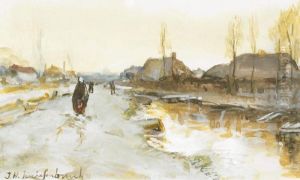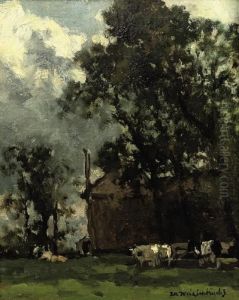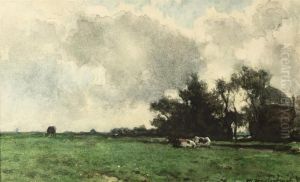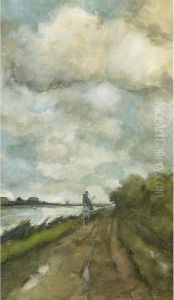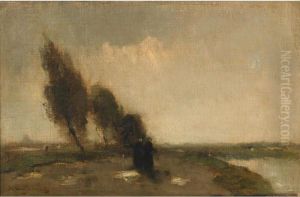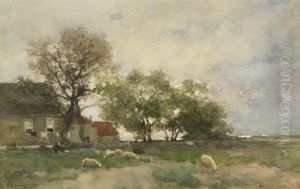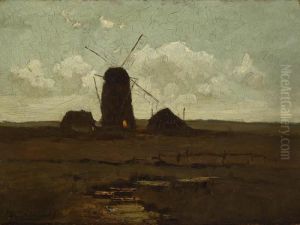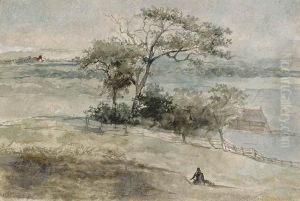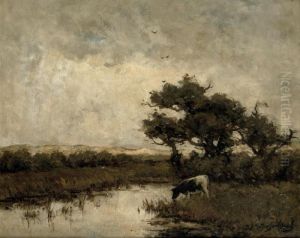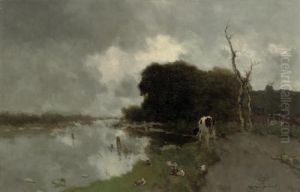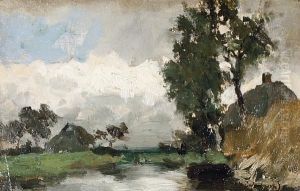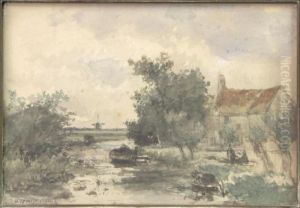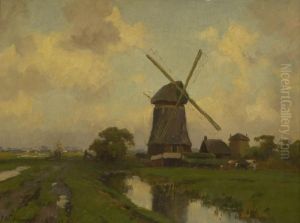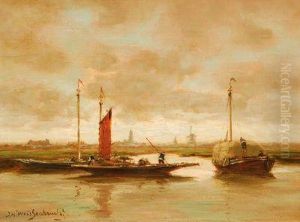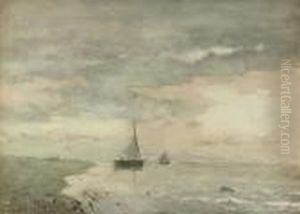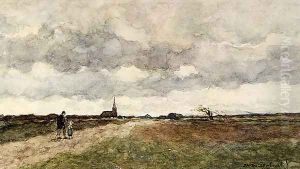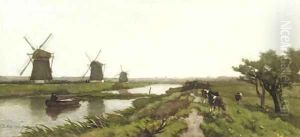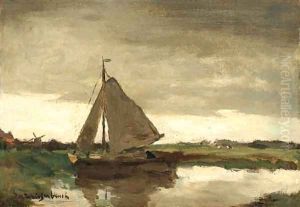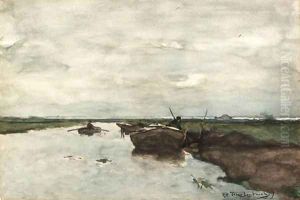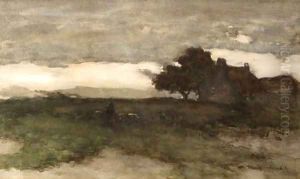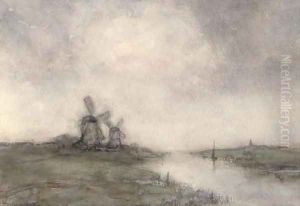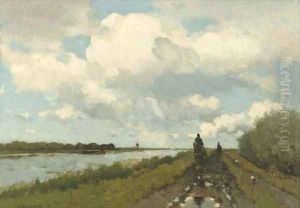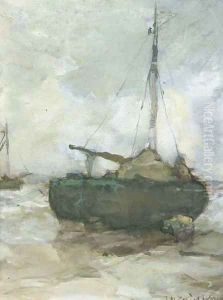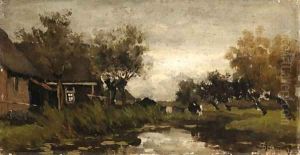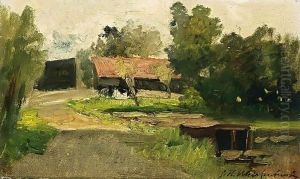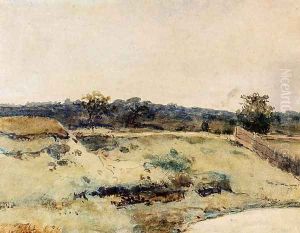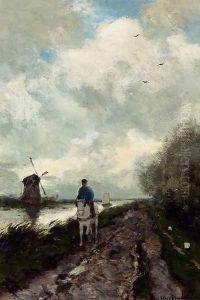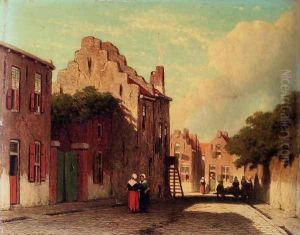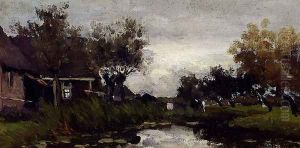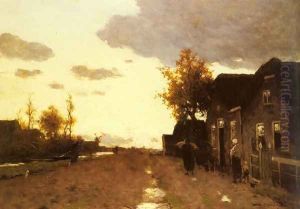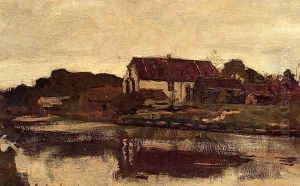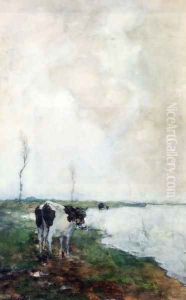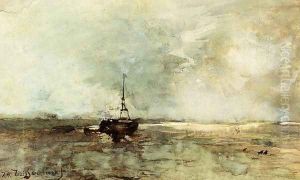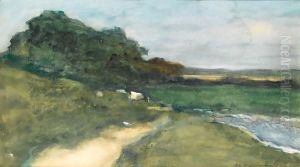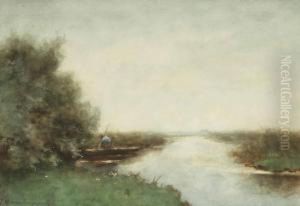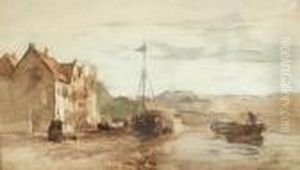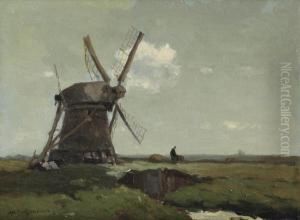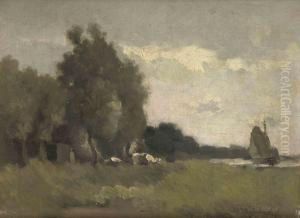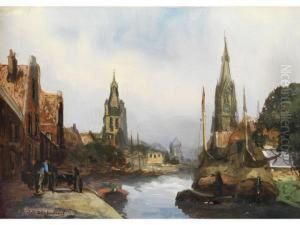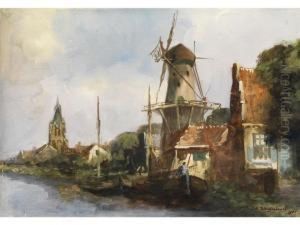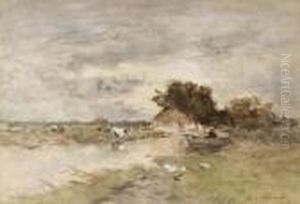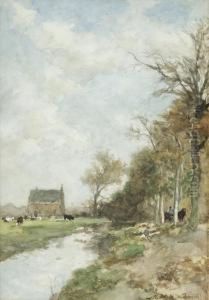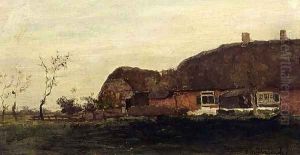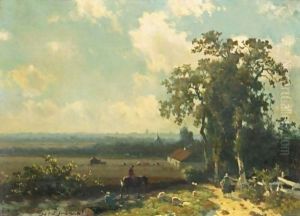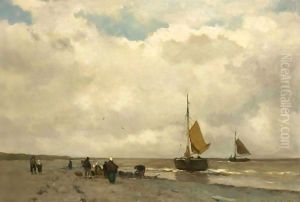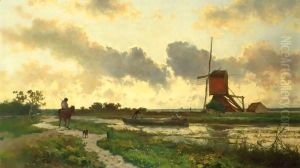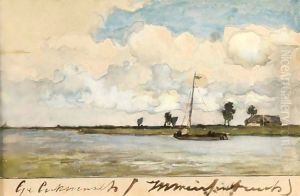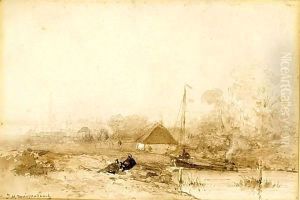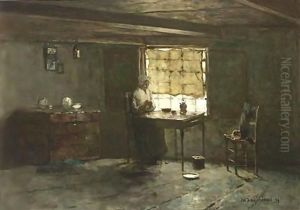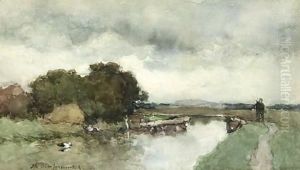Jan Hendrik Weissenbruch Paintings
Jan Hendrik Weissenbruch, also known as Hendrik Johannes Weissenbruch, was a prominent Dutch painter of the 19th century associated with the Hague School. Born on June 19, 1824, in The Hague, Netherlands, Weissenbruch was part of a generation of artists who sought to capture the Dutch landscape in a naturalistic and atmospheric manner.
Weissenbruch's early works were heavily influenced by the 17th-century Dutch masters, and he initially focused on traditional subjects such as cityscapes and historical buildings. However, as his career progressed, he developed a lighter palette and a looser brushwork, which allowed him to capture the fleeting effects of light and weather on the landscape. This shift marked his mature style, which is characterized by a focus on the Dutch countryside, expansive skies, and waterways.
He was particularly renowned for his depictions of the flat Dutch polders, rivers, and the atmosphere of the lowlands. His mastery in rendering the play of light on water and the rich variation of the Dutch sky made his work stand out. Weissenbruch's landscapes often convey a sense of tranquility and timelessness, inviting the viewer to experience the serene beauty of the Dutch environment.
Throughout his life, Weissenbruch struggled with financial difficulties, but he continued to paint and exhibit his work. He was a member of the Pulchri Studio, an important art society in The Hague. His contemporaries included Jozef Israëls, Jacob Maris, and Anton Mauve, who were also key figures in the Hague School.
Weissenbruch's works were not only appreciated in his homeland but also gained recognition abroad. Today, his paintings can be found in major museums in the Netherlands, such as the Rijksmuseum in Amsterdam and the Gemeentemuseum Den Haag, as well as in international collections.
Jan Hendrik Weissenbruch passed away on March 24, 1903, in his hometown of The Hague. Despite the fact that he did not achieve significant fame during his lifetime, his contribution to Dutch art has been re-evaluated over time, and he is now considered one of the most important landscape painters of the Hague School. His legacy continues to influence Dutch landscape painting and is celebrated for its truthful representation of the Netherlands' natural beauty.
